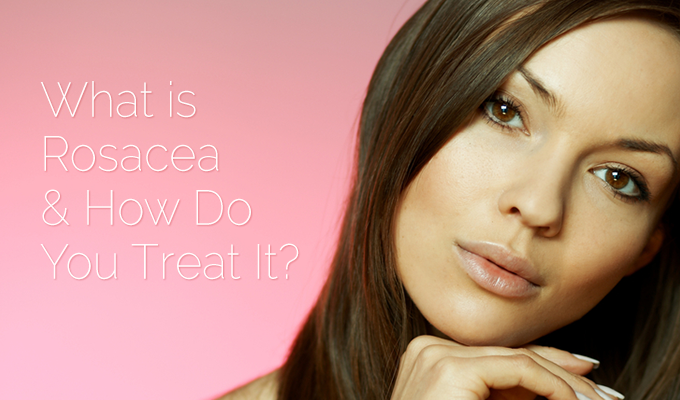If your cheeks, nose, or chin seem consistently a little rosier than normal, you may have rosacea, a chronic skin disease. Rosacea typically appears on fair-skin women around age 30 as redness on the face and sometimes the neck, chest, and scalp that can be consistent or appear in flare-ups. Small bumps, pimples, and visible blood vessels may appear as well. Because of its appearance, people may mistake it for acne, eczema, or an allergic reaction, so a correct diagnosis is important. Seek a dermatologist if you experience any of these symptoms because rosacea can worsen if left untreated.
Although no cure exists and the cause of rosacea is unknown, treatment options are available. Depending on a patient’s symptoms, dermatologists often prescribe oral antibiotics and topical cream to control the condition. For those with more severe symptoms, laser treatment removes the visible blood vessels and reduces extensive redness.
Much simpler treatments include identifying what triggers flare-ups. Ninety-six percent of rosacea suffers who believed they identified a factor that caused flare-ups and avoided it reduced their symptoms. Some of the most common triggers include, sun exposure, stress, hot weather and water, aggressive skin care products, spicy food, and alcohol. Keep a journal to monitor how various factors such as foods, and daily activities, affect your own skin. Avoid the things that you notice cause reactions.
Your skin care routine can also help reduce signs of rosacea. Look for products for sensitive skin that contains botanical extracts including arnica, chamomile, marshmallow grain oil, and calendula.
Ask your Yon-KA skin care specialist about Crèmes 83 and Crèmes 11.
Since irritants vary from person to person, test a new product on your neck to prevent causing a flare up on your face. If you have a reaction, note the ingredients and try something different. When you find a brand that works for your skin, stick with it. By allowing medication to treat the condition and lowering the risk of flare-ups by changing your daily routine, you can reduce the signs of rosacea. Did any of these tips help you? Let us know by commenting below!- Face care serums & elixirs.
- Must have kits to bring the SPA experience to your home.
- Phyto-contour, Anti-fatigue Eye contour cream.
















